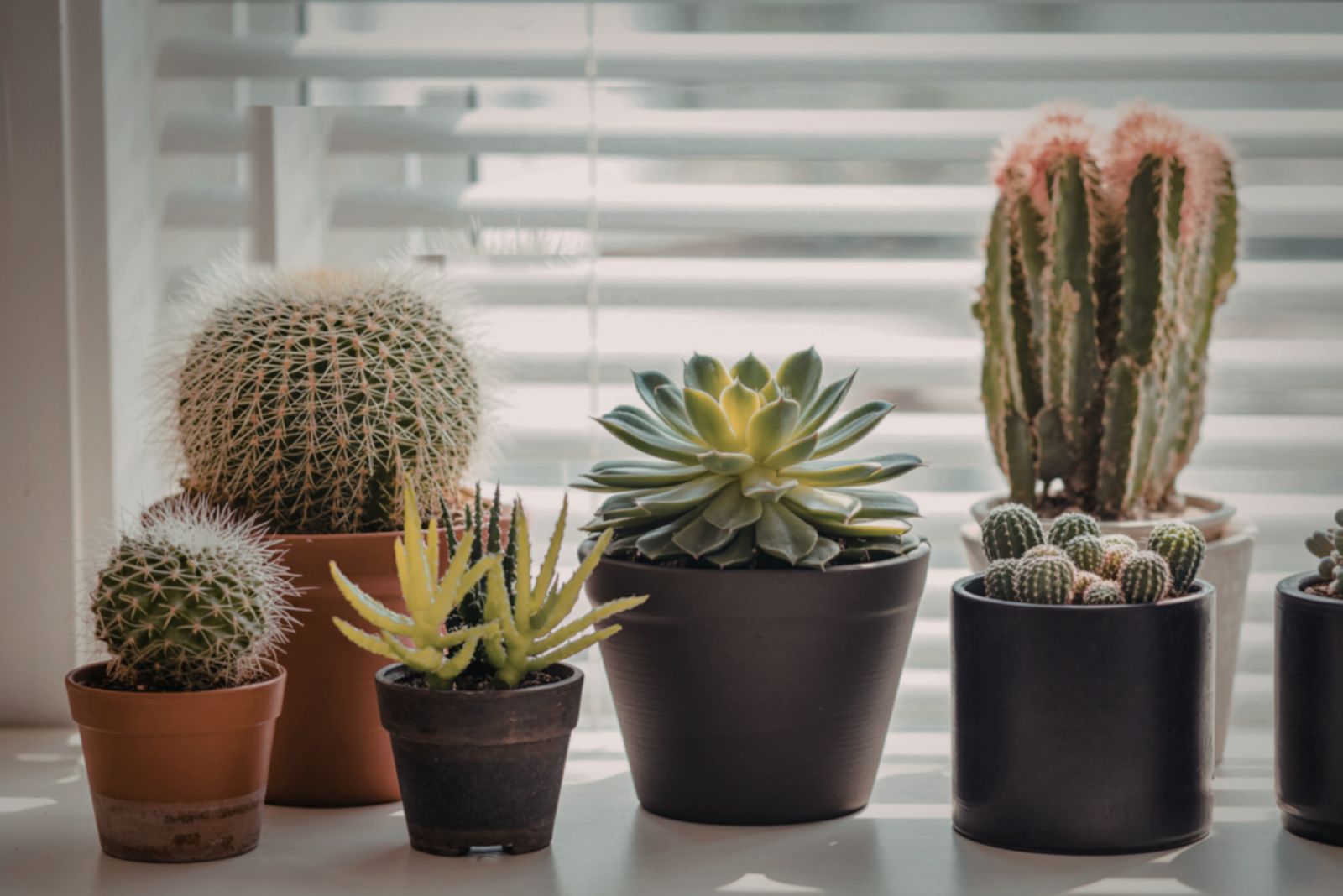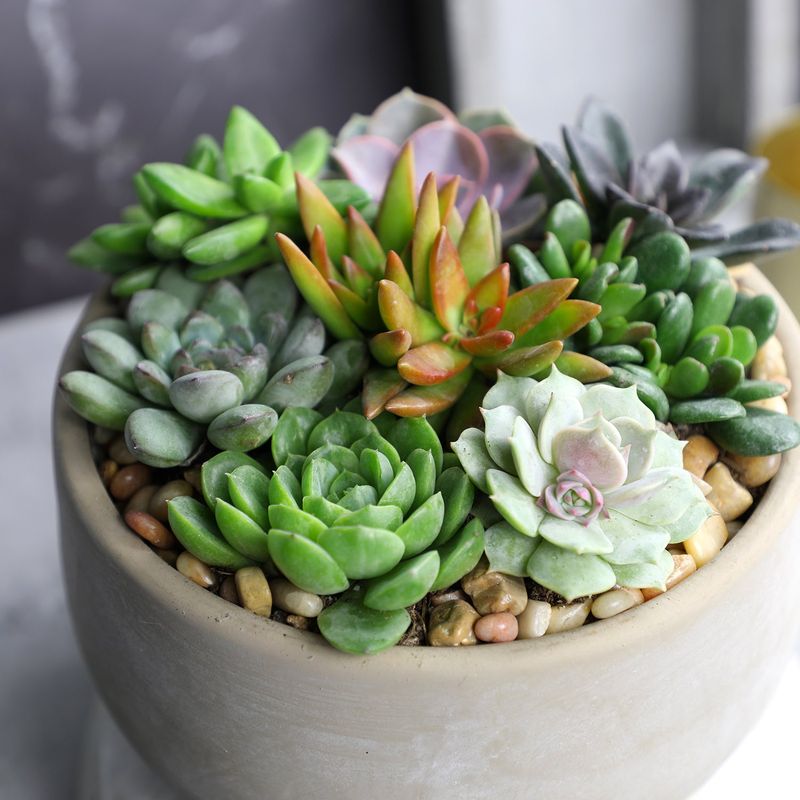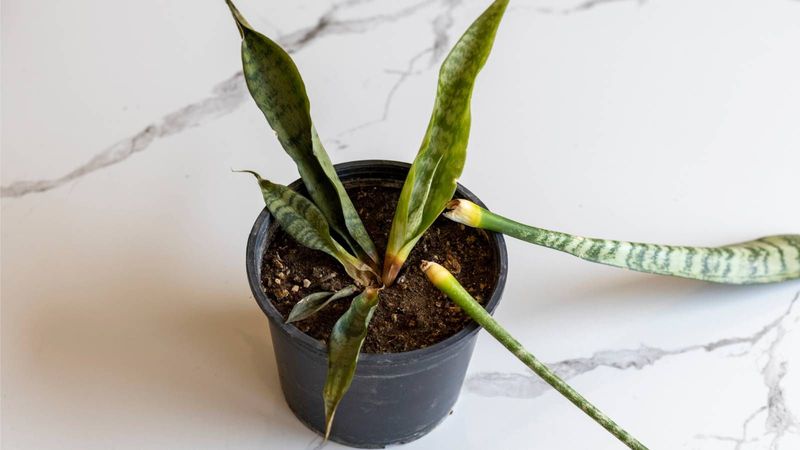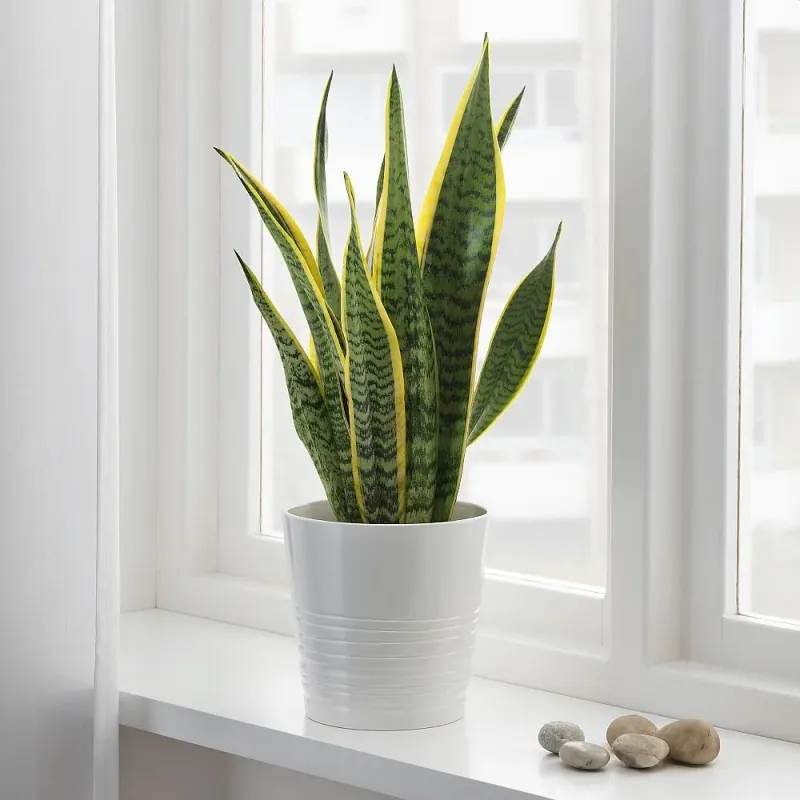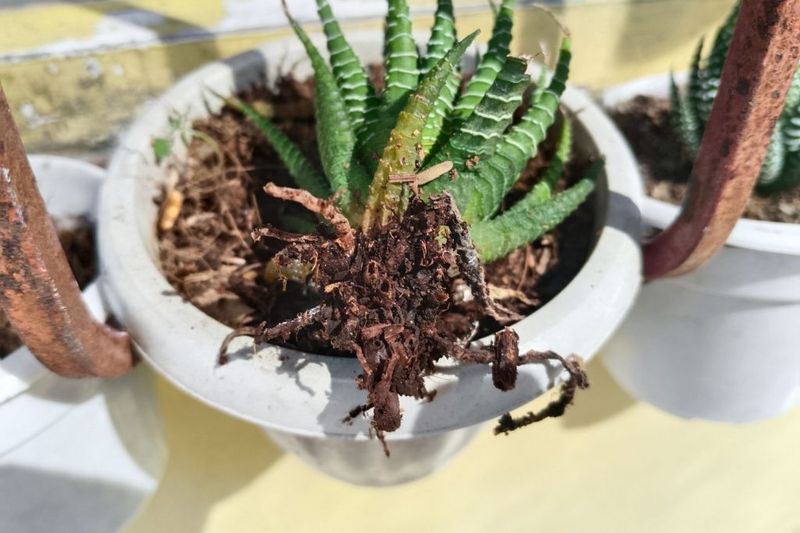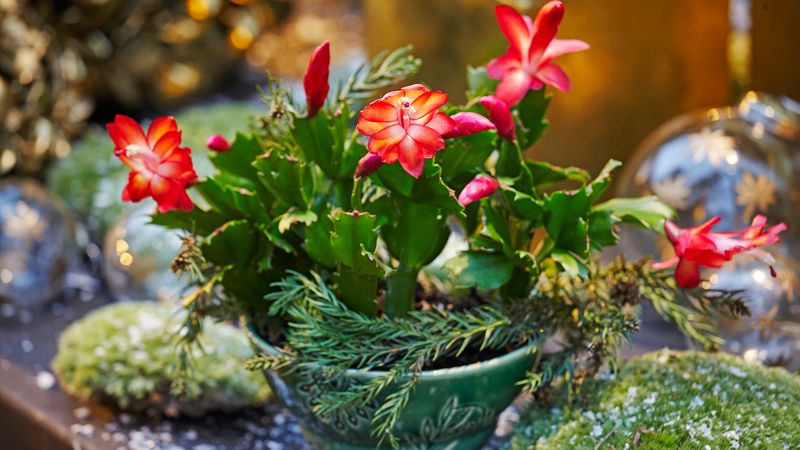Colorado winters can turn cozy homes into deserts for succulents, leaving leaves shriveled and growth stalled.
Dry indoor air, low light, and cold drafts create a perfect storm that few plants can handle.
Even the hardiest succulents show stress when their environment dries out or temperatures fluctuate.
Understanding the hidden challenges of winter indoors gives gardeners the edge to keep these tough little plants thriving.
With the right care, Colorado succulents can survive the harshest December days, keeping their plump leaves and vibrant colors instead of fading under dry, indoor conditions.
1. Indoor Heating Systems Zap Moisture From The Air
Colorado winters force us to crank up the heat, but this creates desert-like conditions inside our homes.
Furnaces and heating systems work overtime in December, pulling every bit of moisture from the indoor air.
While succulents naturally come from arid climates, they still need some humidity to survive.
When the air gets too dry, succulents lose water faster than their roots can absorb it.
Their leaves start to shrivel and wrinkle, looking almost deflated.
You might notice the tips turning brown or the whole plant looking sad and droopy.
Placing succulents near heating vents makes this problem even worse.
The constant blast of hot, dry air literally bakes the moisture right out of them.
Moving your plants away from direct heat sources can help tremendously.
Consider using a small humidifier near your succulent collection or grouping plants together to create a microclimate.
You can also place a shallow tray filled with pebbles and water beneath your pots.
As the water evaporates, it adds a bit of moisture to the surrounding air without overwatering your plants.
2. Dramatic Temperature Swings Stress Plants Out
Colorado is famous for its wild temperature changes, and December takes this to the extreme.
One day might hit 60 degrees, and the next morning could plunge to 10 below zero.
These roller-coaster conditions confuse and stress your succulents beyond their tolerance levels.
Succulents prefer stable environments where temperatures stay relatively consistent.
When they experience constant ups and downs, their internal systems struggle to adjust.
Cold drafts from windows or doors can shock tender leaves, causing permanent damage within hours.
Windows become especially dangerous at night when temperatures outside drop drastically.
Your succulent might be enjoying afternoon sunshine one moment, then facing freezing conditions pressed against cold glass after sunset.
This thermal shock can cause cells to burst, leading to mushy, translucent leaves.
Keep your succulents away from exterior walls and windows during December nights.
A spot just a few feet into the room stays much warmer and more stable.
If you love displaying plants on windowsills, move them at night or add insulation like bubble wrap to the glass to buffer temperature extremes.
3. Shorter Days Mean Less Light Energy
December brings the shortest days of the entire year, with Colorado experiencing limited daylight hours.
Succulents need strong, bright light to photosynthesize and maintain their compact, healthy shape.
Without enough light energy, they slowly decline.
Many people keep their succulents in spots that work great during summer but become too dark in winter.
The sun sits lower in the sky, casting different angles of light through windows.
What was once a bright location might now be shadowy and dim.
Light-starved succulents start stretching toward any available light source, a process called etiolation.
Their stems grow long and weak, leaves space out awkwardly, and the plant loses its attractive form.
This weakened state makes them vulnerable to diseases and pests.
Move your succulents to south-facing windows where they’ll catch the most winter sun.
Rotate pots regularly so all sides receive equal exposure.
If natural light isn’t sufficient, invest in a simple grow light to supplement.
Even a few hours of artificial light daily can make the difference between thriving and merely surviving through December.
4. Overwatering During Dormancy Causes Root Rot
Most succulents enter a dormant or semi-dormant state during winter months when growth naturally slows down.
Their roots stop actively absorbing water like they do during growing season.
December is when many well-meaning plant owners accidentally kill their succulents by maintaining summer watering schedules.
When succulents aren’t actively growing, they need far less water.
Excess moisture sits in the soil with nowhere to go, creating perfect conditions for root rot.
Fungal and bacterial infections thrive in cold, wet soil, quickly destroying root systems.
Colorado’s dry climate tricks people into thinking their plants need more water than they actually do.
You might see dry air and assume dry soil means thirsty plants.
But succulents store water in their leaves and can go weeks without a drink in December.
Check soil moisture before watering by sticking your finger two inches down.
If it feels even slightly damp, wait longer.
During December, most succulents only need water once every three to four weeks.
Watch for wrinkled leaves as your watering signal rather than following a calendar schedule.
Underwatering is almost always safer than overwatering during dormancy.
5. Cold Drafts From Doors And Windows
Every time someone opens an exterior door in December, a blast of frigid Colorado air rushes inside.
These cold drafts might last only seconds, but they can seriously damage tender succulents positioned nearby.
Even closed doors and windows leak cold air through tiny gaps and cracks.
Succulents are extremely sensitive to sudden cold exposure.
Their cells contain high water content, and when temperatures drop rapidly, this water can freeze.
Frozen cells rupture, leaving behind mushy, discolored tissue that never recovers.
Entryways and mudrooms seem like convenient spots for plants, but they’re actually danger zones during winter.
The constant temperature fluctuations from people coming and going create impossible conditions for succulents.
Even a brief exposure to below-freezing air can prove fatal.
Survey your home for draft sources by holding a candle near windows, doors, and outlets on a windy day.
The flame will flicker where cold air seeps in.
Keep succulents at least three feet away from these problem areas.
Weatherstripping and draft stoppers help protect both your plants and your heating bills.
Creating a buffer zone between your succulents and the outdoor cold makes a huge difference in their winter survival rates.
6. Reduced Air Circulation In Closed-Up Homes
When December temperatures plummet, we seal our homes tight against the cold.
Windows stay closed, doors remain shut, and fresh air circulation drops to almost nothing.
This stagnant environment creates problems that succulents simply can’t handle over time.
Good air movement helps prevent fungal diseases and keeps soil from staying wet too long.
Without circulation, moisture lingers on leaves and in soil, inviting mold, mildew, and bacterial infections.
Pests like fungus gnats also thrive in still, damp conditions.
Crowding multiple succulents together on shelves or windowsills makes the situation worse.
Plants need breathing room, especially during winter when they’re more vulnerable.
Touching leaves trap moisture between them, creating rot-prone spots.
Run a small fan on low speed near your succulent collection to keep air moving gently.
This doesn’t mean blasting them with wind, just creating subtle movement that mimics outdoor breezes.
Space plants at least a few inches apart so air can flow around each one.
On mild December days when temperatures rise above freezing, crack a window for an hour to refresh indoor air.
These simple circulation strategies dramatically reduce disease problems and help succulents breathe easier through Colorado’s long winter.
7. Holiday Decorating Stress And Neglect
December brings holiday chaos that completely disrupts normal plant care routines.
Between decorating, shopping, cooking, and entertaining, succulents often get pushed aside or forgotten.
What starts as a few missed waterings can quickly spiral into serious neglect.
Holiday decorations take over prime windowsill real estate, forcing plants into darker corners.
Festive activities mean less time checking on plant health and catching problems early.
By the time January arrives and life returns to normal, some succulents have already passed the point of rescue.
People also tend to overwater during the holidays, thinking they’re making up for neglect.
Others place succulents in decorative containers without drainage holes, creating waterlogged conditions.
Gift succulents arrive in poor-quality soil and cheap pots, then get ignored among the holiday excitement.
Set phone reminders to check your succulents weekly, even during the busiest December days.
A quick five-minute inspection can catch problems before they become fatal.
Keep your plant care routine as consistent as possible despite holiday chaos.
If you receive gift succulents, repot them immediately into proper containers with drainage holes and well-draining soil.
Making your plants a priority, even during festivities, ensures they’ll still be around to enjoy in the new year.

